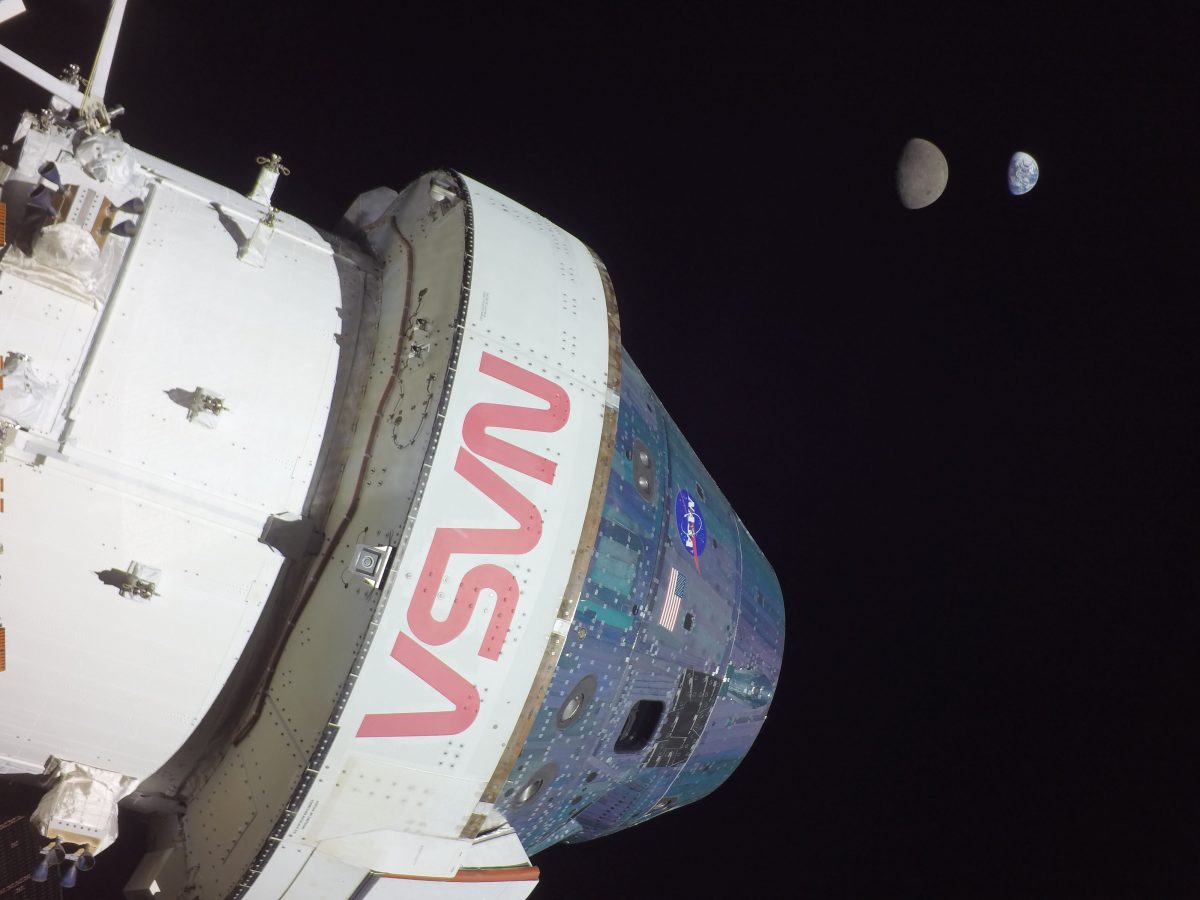NASA's Artemis 1 Orion spacecraft set for return to Earth on Dec. 11

The end is in sight for NASA's historic Artemis 1 mission.
Artemis 1's uncrewed Orion capsule is scheduled to return to Earth on Sunday afternoon (Dec. 11), wrapping up its nearly 26-day deep-space trek with a splashdown in the Pacific Ocean off the coast of Baja California.
Orion has been performing very well to date, and Artemis 1 team members are confident the success will extend through Sunday. But they're not taking anything for granted.
"We are not letting our guard down," Artemis mission manager Mike Sarafin said during a press briefing on Thursday afternoon (Dec. 8). "We have some hard stuff ahead of us."
In photos: Artemis 1 launch: Amazing views of NASA's moon rocket debut
Indeed, Orion's homecoming is one of the most challenging phases of the Artemis 1 mission. The capsule will barrel into Earth's atmosphere on Sunday at about 25,000 mph (40,000 kph), or roughly 32 times the speed of sound.
During reentry, Orion will experience temperatures of around 5,000 degrees Fahrenheit (2,800 degrees Celsius) — about half as hot as the surface of the sun. The capsule's heat shield will have to bear that thermal burden, protecting the rest of the spacecraft.
Breaking space news, the latest updates on rocket launches, skywatching events and more!
This will be a huge test for the heat shield, which is brand-new and has yet to face such extreme conditions. At 16.5 feet (5 meters) wide, it is the largest heat shield of its kind.
"There is no arcjet or aerothermal facility here on Earth capable of replicating hypersonic reentry with a heat shield of this size," Sarafin said.
If all goes according to plan, Orion will splash down Sunday at about 12:40 p.m. EST (1740 GMT) in the Pacific Ocean, off the western coast of Baja California. The site is about 300 miles (480 km) south of the original target landing zone, which was close to San Diego. The change was made to escape expected inclement weather farther north, mission team members explained on Thursday.
A U.S. Navy ship, the USS Portland, will be waiting in the area to recover Orion and haul the capsule back to San Diego. From there, Orion will make its way to NASA's Kennedy Space Center in Florida, where it will undergo a full post-flight checkout.
Related: 10 strange things Artemis 1 took to the moon
Orion lifted off atop a Space Launch System (SLS) rocket on Nov. 16, kicking off the Artemis 1 mission.
Orion slipped into lunar orbit on Nov. 25 and departed on Dec. 1. Four days after that, the capsule performed a 3.5-minute-long engine burn during a close flyby of the moon to put it on course for Earth.
If Orion aces its splashdown on Sunday, NASA can begin prepping for the next flight in its Artemis program — Artemis 2, which will send astronauts around the moon aboard Orion in 2024. Artemis 3 is scheduled to put boots down near the lunar south pole in 2025 or 2026.
There will be more missions after that as well, if all goes according to plan: NASA intends to establish a crewed "Artemis Base Camp" near the south pole by the end of the 2020s. The skills and knowledge gained in this effort will help the agency get astronauts to Mars by the late 2030s or early 2040s, NASA officials have said.
Mike Wall is the author of "Out There" (Grand Central Publishing, 2018; illustrated by Karl Tate), a book about the search for alien life. Follow him on Twitter @michaeldwall. Follow us on Twitter @Spacedotcom or Facebook.

Michael Wall is a Senior Space Writer with Space.com and joined the team in 2010. He primarily covers exoplanets, spaceflight and military space, but has been known to dabble in the space art beat. His book about the search for alien life, "Out There," was published on Nov. 13, 2018. Before becoming a science writer, Michael worked as a herpetologist and wildlife biologist. He has a Ph.D. in evolutionary biology from the University of Sydney, Australia, a bachelor's degree from the University of Arizona, and a graduate certificate in science writing from the University of California, Santa Cruz. To find out what his latest project is, you can follow Michael on Twitter.
